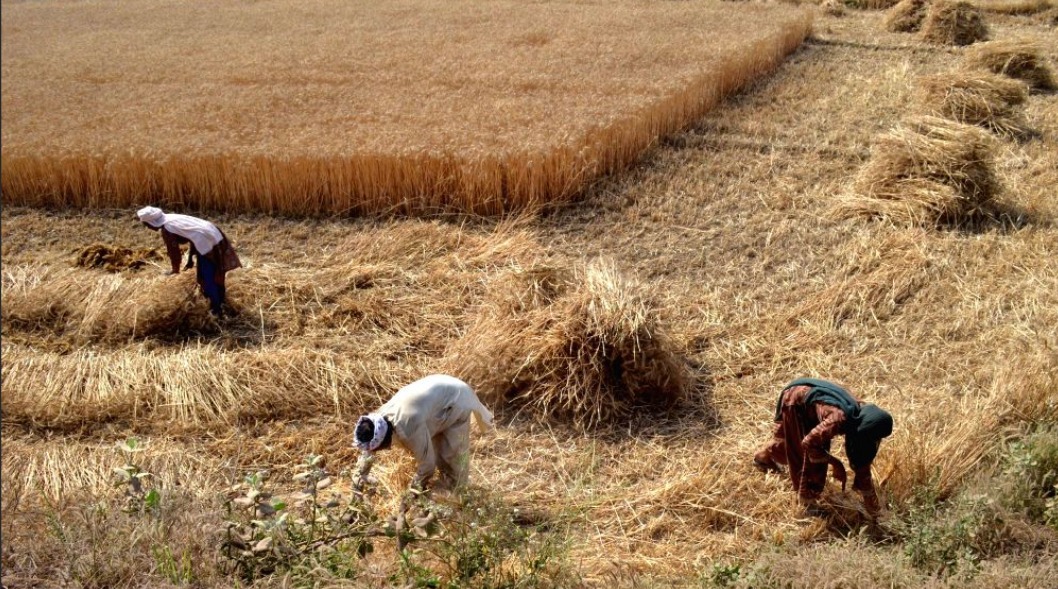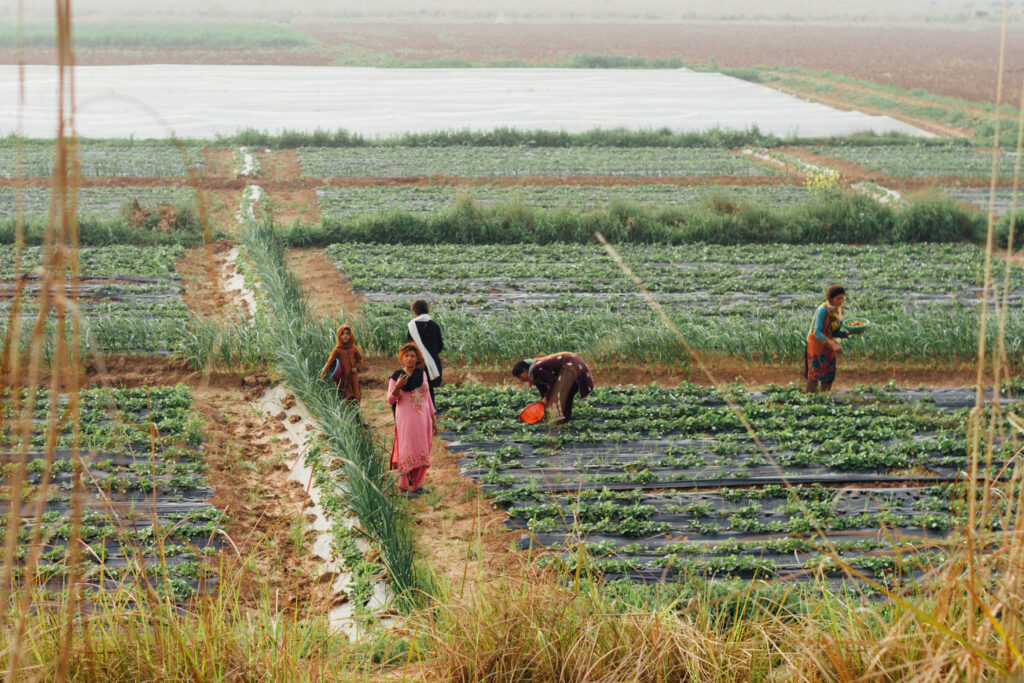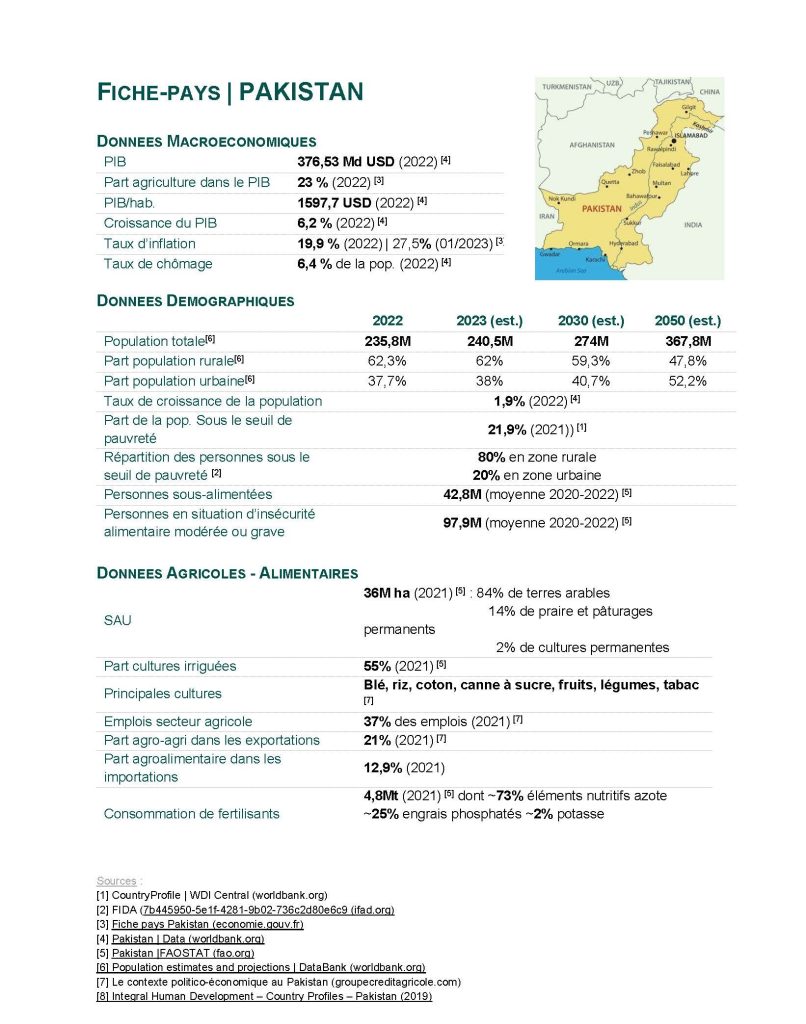Pakistan: What are the challenges for agricultural recovery?
Fifth most populous country in the world with over 235 million inhabitants, Pakistan faces a key challenge for its future: the development of its agriculture and the food security of its population. Following a mission to meet with stakeholders in the sector at the request of the French Embassy in Islamabad, the FARM Foundation analyzes the complex dynamics shaping the country's agriculture.
Pakistan, a sleeping agricultural giant? The country boasts significant advantages in terms of its relatively fertile land, particularly in the Indus Valley, and a diversity of agro-climatic zones, ranging from hot plains to mountainous areas, allowing for a wide variety of crops. The country thus rivals other major agricultural powers such as China, India, Brazil, the European Union, and the United States in several crops, such as wheat, rice, sugarcane, and cotton. Major pillar of the country's economy, the agricultural sector contributes more than 22 % of the GDP[1] and 38 % jobs.
The country also stands out in cattle, sheep and goat farming (15th in the world for meat production) but also in poultry farming (9th in the world for egg production, more than 21 billion each year for nearly 50 million hens). More than half of the agricultural GDP is generated by livestock farming and dairy production. Poultry farming has also experienced significant growth with significant production of meat and eggs.
The agricultural sector, while appearing promising, nevertheless faces numerous challenges that weigh heavily on its future. 5th most populous country in the world (behind China, India, the United States and Indonesia), between 2023 and 2030 Pakistan will welcome nearly 35 million new inhabitants while the population is already massively young. Poverty is a major problem (36 % of the population) and is concentrated in rural areas (75 % of the poor population).
Furthermore, according to the United Nations (FAO/WFP), Food insecurity is worsening in the country which is ranked 92th ranks 116 out of 100 on the Global Hunger Index. The current situation is largely due to the consequences of the floods in the summer of 2022, which affected nearly a third of the country. Let us not forget thatFood security is as much a question of the quantity available as of the economic capacity to purchase food.However, food inflation has been rising since 2021 (8.3 %) and in January 2023 exceeded 35 %, knowing that the salary of a daily worker is around 2 $ per day.
The country is also experiencing a widening of its food and agricultural trade balance. Depleted foreign exchange reserves and currency depreciation reduce the country's ability to import food. However, Pakistan is a net importer of food, amounting to 9 billion $ in 2020 (compared to 1.2 billion in 2000). It depends in particular on vegetable oils and proteins (3.5 billion $), mainly from palm and soybeans. Indonesia's dependence on palm oil is very significant and is not without consequences for securing the country's supplies. Given the increase in consumption of products from the oil and protein complex, an investment in this sector appears more than important. Especially since, at the global level, other emerging countries are highly dependent on palm oil and the regulations to combat deforestation within the EU could have consequences on the availability of these products with a risk of increasing their prices.
The country exports 5.3 billion tonnes of agricultural products, mainly rice, but since 2008 the amount of exports has stagnated. Note that if we add cotton products and its processing, the agricultural balance becomes surplus. The country's economic situation is all the more worrying since between 2023 and 2026 Pakistan is supposed to repay an external debt of 77.5 billion $. A colossal sum given that the country's GDP was 350 billion $ in 2021 (growing for 20 years).
The political and economic instability of the country linked in particular to the results of the last legislative elections[2] in February 2024 limits its capacity to import and has consequences for its national industrial production. Due to the lack of public and private investment and due to structural challenges, agriculture is not fulfilling its mission as the driving force of the national economy[3]. Services and industry are driving economic growth, even though they have not provided enough jobs for rural residents. There is, in fact, a major debate in Pakistan today about the transformation of these areas, with some experts calling for organized rural-urban migration to avoid land fragmentation.[4].
Natural resources in high demand
Natural resources are unevenly distributed across the country, while the impacts of climate change are very strong. The infrastructure used to manage these resources, particularly the canal system in the Indus Basin dating back to British colonial times, is also poorly adapted. Almost all surface water is used for agriculture, and although there have been violent monsoon episodes, particularly in 2022, Pakistan is running out of water in some areas.
Although the Indus irrigation system is a valuable resource, the excessive dependence on irrigation leads to problems of soil salinity and long-term resource depletion. Pakistan is among the countries most exposed to water stress[5]In addition to the low availability of resources, poor management generates waste, which poses a long-term risk to the sustainability of agriculture.

Several factors negatively impact Pakistan's agricultural productivity, particularly when the sector's performance is compared to that of other similar countries. Average cereal yields in Pakistan are 35 quintals per hectare, compared to 59 in Vietnam or 63 in China. The proportion of the active agricultural workforce is also very high in Pakistan (38 quintals per hectare), compared to 29 quintals per hectare in Vietnam, where it has declined considerably over the past 30 years. This calls into question the structuring of agriculture and the tools available to ensure its modernization and adaptation to contemporary challenges.
Indeed, Pakistani agriculture is broadly divided into two distinct socio-economic blocs, very numerous small farmers on the one hand and large landowners[6] on the other hand. 45,% of the country's arable land is held by 2,% landowners. The latter have privileged access to inputs (fertilizers) and government subsidies, particularly on wheat, cotton and sugar.
Conversely, small producers produce primarily for their subsistence and may sell a surplus on local markets. They own a few animals (most often buffalo or cows) that produce milk (half of the milk produced is self-consumed) and represent a form of precautionary savings, which can be decapitalized in the event of shocks. However, we should note the emergence of owners of medium-sized farms. which produce a wide variety of crops (rice, corn, potatoes, fruits, tobacco, herds not exceeding 50 heads) [7].
However, agriculture remains predominantly small-scale and is already highly resource- and labor-intensive. For example, as soon as the rice harvest is complete, producers sow the next crop. To address the issue of food security, there can therefore be no vertical intensification (number of crops per year) and it will be difficult to imagine more land being mobilized in the future. The size of plots is also a significant limitation to allow producers to invest.Landowners with less than 5 ha (12.5 acres) represent more than 80% of the agricultural population, according to the 2010 agricultural census.
The authors of the chapter on land issues in Pakistan in Rethink Pakistan, a 21st Century perspective insist that these agricultural producers do not have the capacity to produce efficiently and that they would be stuck in a poverty trap[8]. There land issue appears as a key node in the power relations in Pakistan between smallholders and large landowners. This would also be one of the major obstacles to the expansion and consolidation of democracy. Indeed, the landed aristocracy is very active in maintaining its privileges and opposes all attempts at land reform. The landowners form a lobby well represented in governance bodies, notably the National Assembly.
A productivity hasagricultural slowed down by multiple constraints
Other dynamics are significantly slowing down the country's productivity, particularly technical and agronomic (soil salinization, loss of organic matter, inappropriate fertilization practices, water pollution, poor quality seeds, etc.). Weak agricultural infrastructure leads to significant post-harvest losses, while access to veterinary medicine remains limited in a country where livestock farming is an economic and social pillar.
Furthermore, it appears that public action in agricultural matters (prerogative of the provinces in this federal state), generally oriented towards food security, has turned its back on family farming. Often considered as a income sector and rarely as a profitable activity, agriculture has not been transformed to integrate into value chains, with a few rare exceptions such as cotton to a certain extent or potatoes today[9]. There poor organization, in cooperatives for example, and the limited connection of producers to markets, conjugated to the weakness of the fabric of processing or service companies, do not promote fair remuneration for producers or their investment capacity.
When it comes to financing, many small farmers have a limited access to financial services, especially credit due to the lack of sufficient collateral and the complexity of loan procedures. As a result, many turn to informal lenders who often charge high interest rates, causing excessive indebtedness and jeopardizing the financial viability of farms.

Finally, theis public support are insufficient, ineffective and/or poorly directed. Although we do not have precise data, it would appear that the total support provided to producers is negative. Total support includes support from provincial budgets in the form of subsidies to producers or investments in training or infrastructure on the one hand and market price support to control price differences between local and international markets. In addition, the price paid to Pakistani producers is generally lower than world prices, which does not allow them to invest sufficiently. This is a form of indirect levy or implicit taxation on producers to guarantee low prices for consumers. Thus, the few subsidies or aid that reach producers are negatively offset by prices that are too low.
Techno-solutionism as a perspective?
Faced with the demographic, climatic and geopolitical challenges that Pakistan will have to face, the vision of the trajectory of agricultural transformation is not clear. What will become of the millions of small Pakistani farmers who have little access to finance, training, or land? A response often given by the interlocutors we met during the study mission relates to the use of new technologies for the development and adaptation of agriculture: drones, big data, IoT (Internet of Things) with the use of sensors, etc.
Technical progress in a " climate smart agriculture »[10] – as widely promoted by authorities and think tanks in Pakistan – may appear as a part of the solution, but it must remain a tool serving a transformation decided collectively within a more global framework of transformation of economies. Indeed, the techno-solutionist vision of agricultural development cannot ignore the socio-political dimensions inherent in the use of this type of solution such as conditions of access or technological dependence, particularly for family farming.
Furthermore, the use of these technologies requires a large amount of data, demarcated plots, investment capacity, technical knowledge, and significant energy expenditure (access to electricity remains a problem in Pakistan). Will this type of progress be accessible to all farmers or only the most productive, and will it contribute to the development of rural areas? These are essential questions that will need to be answered as the Pakistani government has launched the " Special Investment Facilitation Council » which aims to operate a “transition from tradition to innovation” by attracting private investors to finance large, capital-intensive structures.
Notes:
[1] Excluding livestock, the contribution of agriculture to GDP would not exceed 10 % according to the 2016-2017 economic surveys of the Pakistani government.
[2] See in particular Interview with Karim Pakzad, “Pakistan: a country mired in political and security instability?”, IRIS, October 25, 2023 (online) ; Laurent Gayer, “In Pakistan, the return of the sound of boots”, The Diplomatic World, November 2023.
[3] See on this subject the report of the Pakistan Business Council, “The state of Pakistan's agriculture – 2023: setting agriculture on the path of growth”, published in March 2023 (online).
[4] See on this subject Daud Khan, “The need to prioritize agricultural development, one way forward is thorough a movement of labor out of rural areas”The Express Tribune, August 8, 2022 (online).
[5] See on this subject the conclusions of a conference “Climate Change and Water-related Challenges in Pakistan: Tangible Solutions” organized by the Aga Khan University's Institute for Global Health and Development and the SDSN in November 2022 (online).
[7] https://www.tresor.economie.gouv.fr/Articles/2023/12/01/l-economie-agricole-pakistanaise-entre-conservatismes-et-modernisation
[8] IA Rehman, “Land reforms: key to social justice and progress” in Rethinking Pakistan, edited by Bilal Zahoor and Raza Rumi, Folio Books
[9] See here PepsiCo's procurement program for the manufacture of Lays potato chips (online)
[10] Sébastien Treyer, Matthieu Brun and Pierre-Marie Aubert, “Ensuring transparency and accountability of the Global Alliance for Climate Smart Agriculture in the perspective of COP21”, IDDRI Policy Brief, July 2015.
————————————————————————————————–

